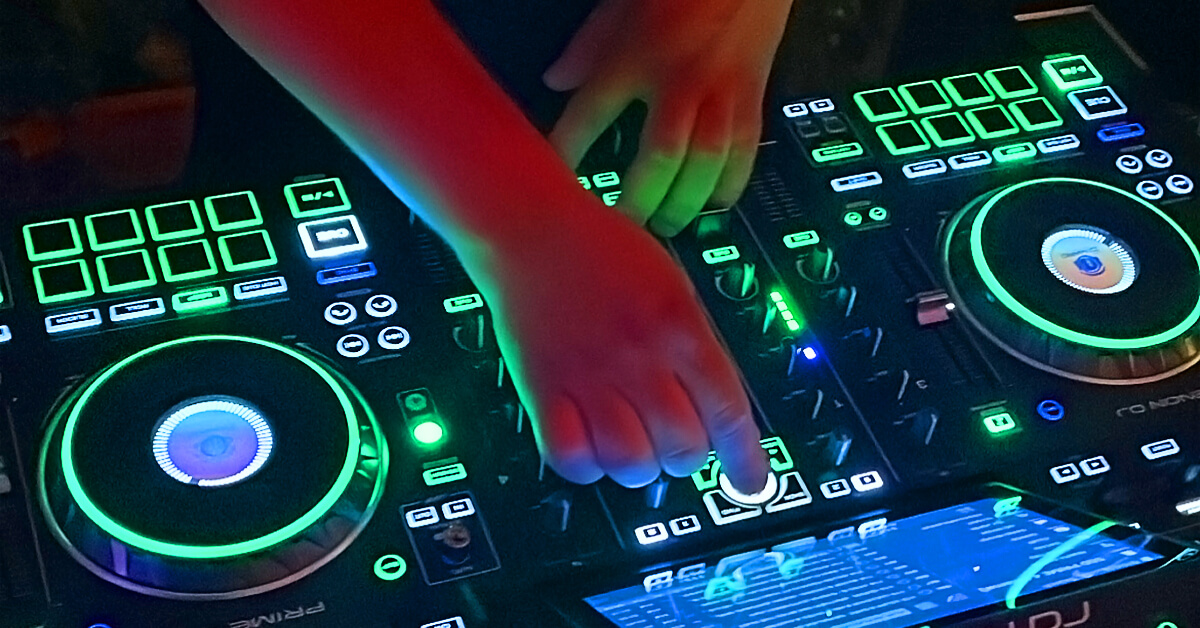When you think about creating the optimal work environment, does the quality of sound in your workplace ever come to mind? This might not seem as influential to productivity as some other ergonomic features, such as the comfort of your desk or the amount of light in your space. But as it turns out, the sounds you listen to (or are exposed to as background noise) can have a major impact on your overall performance. In this edition of The Productivity Box, we’ll talk about that connection—plus, how to use sound to your advantage on the job.

How does the human brain react to sound?
According to joint research from Made Music Studio and Sentient Decision Science, humans are highly sensitive to sound. In fact, there’s an 86 percent correlation between these two elements:
- The brain’s subconscious emotional response to auditory stimuli, and
- Your conscious desire to either seek out or avoid the experience associated with that sound in the future.
In other words, the brain attaches meaning to what you hear and uses that information to guide your actions or decisions. It can make you avoid the experience, if it tags it as bad. Conversely, if the sound evokes a sense of appeal, you may want to move towards the experience connected to it.
Let’s take for example the sound of thunder and torrential rainfall beating on your window. The brain associates this combination with the undesirable experience of a storm. So, as a result, you choose not to go outside. Or, let’s assume you hear the ping of a social media notification. The brain has been primed to correlate that sound with attention from your peers and instant gratification. So you choose to open the app and scroll through notifications. Yup, it’s that straightforward 🙂
There’s no doubt about it—sounds influence our emotional state and the actions we take in response. And it gets even more fascinating when we learn how this affects us in the workplace.
Sound influences work performance
The acoustics in your professional environment can either inspire or diminish motivation for working. Picture a chaotic office full of noisy distractions from phone calls, keyboards, video conferences, and fellow co-workers. It would be tough for anyone to concentrate on their job in such a loud atmosphere. But that’s how two-thirds of U.S. employees used to work on a regular basis, suggests MIT Sloan Management Review.
In time, professionals started to realize how ambiance impacts their focus. High levels of noise can intensify stress, decrease attention span, cause errors, and impair cognitive function, according to this report. However, not all sounds are corrosive to work performance. As the same journal explains, when you curate the right volume, pitch, tone, duration, and type of sounds in your environment, things get better.
Working in quieter and more private setups creates a unique opportunity to craft an intentional, thoughtful soundscape free of loud acoustic interruptions. This way, you and your colleagues become more alert, focused, and creative on the job. And that will lead to a serious boost in productivity.
Here’s how to optimize a soundscape that makes you want to work rather than avoid it.
Strategies to optimize the sound in your workspace
There are many practical ways to tweak the sound in your environment, whether working alone at home or at the workplace. Use these strategies below to help you curate the ultimate productivity-enhancing workspace.
1. Eliminate disruptive noise sources as much as you can
According to research from the University of California Irvine, it takes about 23 minutes to refocus on a project after hearing a distraction. While it’s not always possible to control all background noises in your environment—especially if sharing space with co-workers—you can minimize exposure to certain audio interruptions.
For example, mute email and social media notifications on your computer and mobile device. Or simply wear noise-cancelling headphones to block loud external frequencies from reaching your ears.
2. Play low-level ambient sounds to evoke a sense of calm
Ambient sound is effective for work performance because it’s characterized by familiar, rhythmic tempos, which soothe the brain to reduce stress levels and sustain focus. The Psychological Research Journal reports that moderate-frequency ambient sound can help to lower mind-wandering states and orient your attention on one particular task.
There are several types of ambient soundscapes to choose from, like:
- Nature – water, birds, crickets, wind
- Instrumental – piano, flute, strings
- White noise – TV or radio static, ceiling fan, heartbeat
You can find such ambient playlists on YouTube or Spotify.
3. Avoid listening to content that pulls your focus off work
It might be fun to listen to your favorite songs or podcasts while you work, but it’s not the most productive use of time. Listening to immersive audio such as podcasts and music can increase mental stimulation during repetitive, mundane tasks. Yet, it can harm your performance on tasks that require deep concentration, the PLOS One Journal explains.
Media multitasking, as it’s called, splits your attention between the work project at hand and the entertaining content in your ears. Since the brain cannot equally focus on both competing stimuli at the same time, this impairs mindful awareness on the job.
Turn up the volume of your work performance
As you adjust the ergonomics and ambiance of your work environment, don’t overlook the importance of sound.
Eliminate noise distractions and curate a strategic soundscape for maximum productivity. You might be surprised with how a few subtle but intentional acoustic changes can shift your job performance.
Post A Reply